NerdChef Pizza Steel Review: Baking Steel Alternative — Is it the Best Pizza Steel?
In order to approximate the conditions of a Neapolitan wood-fired brick oven at home, and produce a crisp and scorched blistering crust that’s signature of Neapolitan pizza, I took advantage of the thermal conductivity and thermal mass properties of steel. I used the ½ inch NerdChef Steel Stone. The Baking Steel is much more popular, but it wasn't readily available in Canada when I was looking for a pizza steel, so I had to find a Baking Steel alternative. I found the NerChef Steel Stone met my needs nicely.
The Original Baking Steel will work as well. You will also need a pizza peel; I use and highly recommend the Super Peel. It comes with a cloth conveyor belt system that makes it an ease to launch your pizza dough into the oven and to retrieve it after it's done cooking.
Breville recently released the Breville Pizzaiolo, a counter top pizza oven which promises to reach 750°F—nearly matching the thermal conditions of a traditional wood-fired brick oven. While the Pizzaiolo does look promising, I have yet to test it, or see it demoed, so I cannot recommend it at this time. If you've tried it, I would love to see your impressions of it in the comments below.
Sizzle and Sear Kitchen Equipment Deal Alerts In Your Inbox
What Got Me Thinking About Pizza
Next week, I’m off to Europe to visit my sister in London. As part of my trip, I’ve decided to travel to Italy for a week. I became fascinated with the country after teaching about Renaissance Europe to my grade eight students over the past year. It made me wish I had paid more attention when I was in grade eight! I wonder how much my students will remember?
I’ll be starting my week-long Italian adventure in the Renaissance city of Florence, making my way to the ancient city of Rome, and ending my journey in Naples. I’m particularly excited about Naples, with it being the birthplace of pizza!


The Invention of Pizza and Europe’s Unwarranted Fear of the Tomato
Pizza became common in late 18th century Naples, when poor Neapolitans added tomato to their flat breads. Pizza could have been developed much earlier if it weren’t for Europeans’ initial fear that the tomato was poisonous.

Tomatoes were first imported into Europe from the Americas, as part of the much larger Columbian exchange of plants, animals, and illness between the two continents, in the 16th century; however, it took hundreds of years for Europeans to overcome their fear of the tomato, which was sometimes referred to as “the poison apple”. This fear came from the observation that when aristocratic Europeans consumed tomatoes, they often fell ill or died. But it wasn’t the tomato itself to blame. Instead, the acid in the tomato was leaching lead from the pewter plates they were served on! Tomatoes were just an unfortunate intervening variable.
Of course, pizza has spread around the globe since it was first developed in Naples in the late 18th century. And it looks different wherever you go. Whether it’s the often contested practice of putting fruit on a pizza (oddly enough, Hawaiian pizza was actually invented by a Canadian) or preparing a pizza in a cake pan— à la Chicago deep dish, pizza cannot be singularly defined. That being said, the original Neapolitan pizza is often held up as the gold standard in pizza making.
What is Neapolitan Pizza?
To answer this question, I turn to the Associazione Verace Pizza Napoletana (English: The True Neapolitan Pizza Association), or AVPN for short. The AVPN is a non-profit organization whose mission is “to promote and protect in Italy and worldwide the true Neapolitan pizza (verace pizza napoletana)”.
According to the AVPN, a true Neapolitan pizza must meet strict guidelines when it comes to the dough recipe and technique; additionally, the ingredients that compose the pizza’s toppings must come from the Campania region of Italy. While these guidelines are strict, they are easy enough for the home cook to follow. What makes Neapolitan pizza making truly challenging for the home cook is the stipulation that the pizza must be cooked in a wood-fired-oven that has reached a temperature of 800-900°F! To top it off, the pizza must be cooked in 60-90 seconds.
I don’t know about you, but I don’t know anyone who has a wood-fired oven in their kitchen. And I don’t know of any home ovens that’ll go much beyond 550°F. And cooking a pizza in 60 to 90 seconds at home? Unheard of! Yet this last stipulation isn’t something that you can skip; in fact, it is absolutely essential for achieving the crisp and scorched blistering crust that is a signature of Neapolitan pizza making. Luckily the problem of home ovens with low heat capacities can be solved without installing a wood-fired oven in your kitchen.
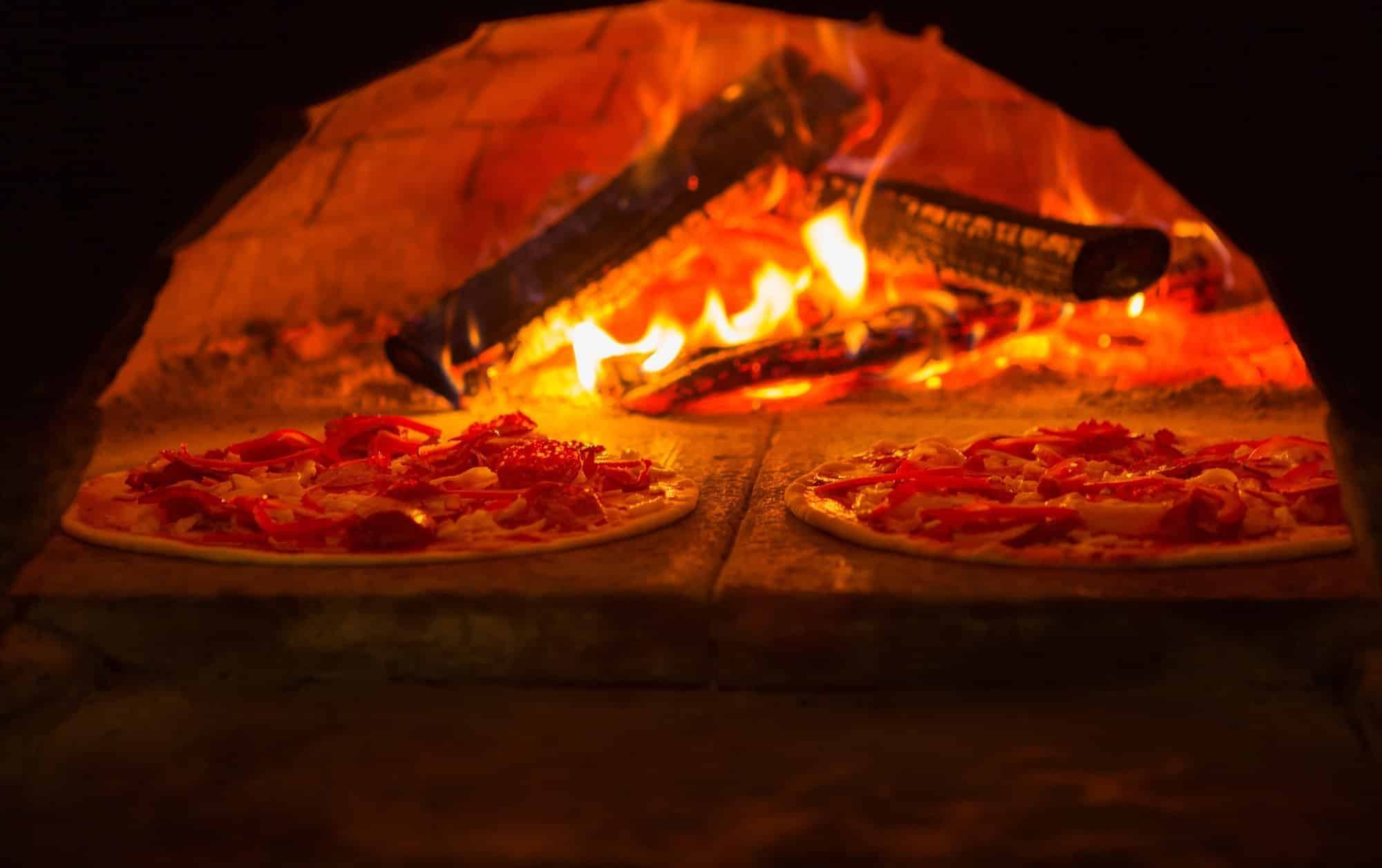
A Slab of Steel will Overcome Your Home Oven’s Lack of Heat
There is a consensus among home pizza-making enthusiasts across the internet; in order to replicate, as closely as possible, the conditions of a 800-900°F wood-fired oven at home, your best option is using a thick slab of steel. Don’t mistake this for stainless steel pizza pan that you might find at Bed Bath and Beyond; that won’t do. I’m talking about a ½ inch thick sheet weighing a whopping 32lbs. It doesn’t sound very high tech, but science can explain why it’ll work.
The Science of Steel
Steel has a High Thermal Conductivity
Steel works well because of its high thermal conductivity. Thermal conductivity is the ability of a material to transfer its heat to another material. When compared with a traditional ceramic pizza stone, steel will transfer heat 18x faster (3 watts per meter kelvin vs. 54 watts per meter kelvin)! That makes a huge difference when you are trying to replicate the conditions of a traditional wood-fired brick oven.
If you don’t believe me, give this thought experiment a try: imagine that it’s a blistering 104°F/40°C summer day. You’re dead-tired after a long day of being outside. You decide to lean up against a stone wall. Does the stone burn you? No. It’s a little warm, but it’s bearable. Now, imagine you’re leaning up against a steel wall; you immediately jump away as your reflexes take over to avoid the excruciating pain of being burned!
The above scenario demonstrates the vast difference in the thermal conductivity of the two materials. A difference that can be harnessed in home pizza making! Steel is your best choice when you want to imitate the conditions of a 800-900°F wood-fired brick oven at home; essentially, steel’s high thermal conductivity imitates a much hotter cooking environment, allowing you to achieve very similar results that you would in a 800-900°F wood-fired brick oven.
Steel has a High Thermal Mass
Not only does steel have high thermal conductivity, it also has a high thermal mass, meaning it absorbs and stores heat very well. In order to fully take advantage of this thermal mass, you will want to make sure you preheat your oven for an hour prior to using your pizza steel. This might seem like a disadvantage, but by having a properly preheated steel, you can make one pizza after another without waiting for the steel to reheat. The high thermal mass will ensure that the cooking surface stays hot, even as the broiler cycles off and on and the door is opened and closed.
Transforming Theory into Practice with the NerdChef Steel Stone
I wanted to put this pizza making theory into practice, so I went out on the hunt for a ½ inch slab of steel. The most frugal home pizza makers will directly contact a local metal fabrication business, ask for a scrap piece of steel, take it home, polish it up, and season it. That seemed like too much of an inconvenience to me, and I didn’t want to fall down the rabbit hole of researching food-grade steel sources. However, the most popular option marketed towards the home consumer, the Baking Steel, ended up costing too much in shipping and duties to get it to Canada at the time. Instead, I had to find a baking steel alternative. I settled on the ½ inch NerdChef Steel Stone – High-Performance Baking Surface for Pizza that I found on Amazon. This pizza steel is 16” x 14.25” x 0.5”, and it came pre-seasoned with flaxseed oil. It’s extremely heavy; a whopping 32lbs! While some might see the weight of this steel as a disadvantage, it is actually an advantage because it means improved thermal mass that allows you to turn out pizza after pizza.
The much more popular steel plate option, the Baking Steel, is also available. I have yet to test this product specifically; however, steel is steel and it should perform just as well as the NerdChef. It is well-reviewed by purchasers on Amazon, so go with whatever is most affordable at the time of purchase.
You might notice that NerdChef and Baking Steel sell different thickness of plates. I went with the 1/2 inch because it results in the fastest cooking times and has the best heat retention; however, many have had success with the 1/4 inch varieties. Also, half the thickness means half the weight, if that’s a consideration.
As an aside, Breville recently released the Breville Pizzaiolo, a counter top pizza oven, which promises to reach 750°F—nearly matching the thermal conditions of a traditional wood-fired brick oven. While the Pizzaiolo does look promising, I have yet to test it, or see it demoed, so I cannot recommend it at this time. If you’ve tried it, I would love to see your impressions of it in the comments below.
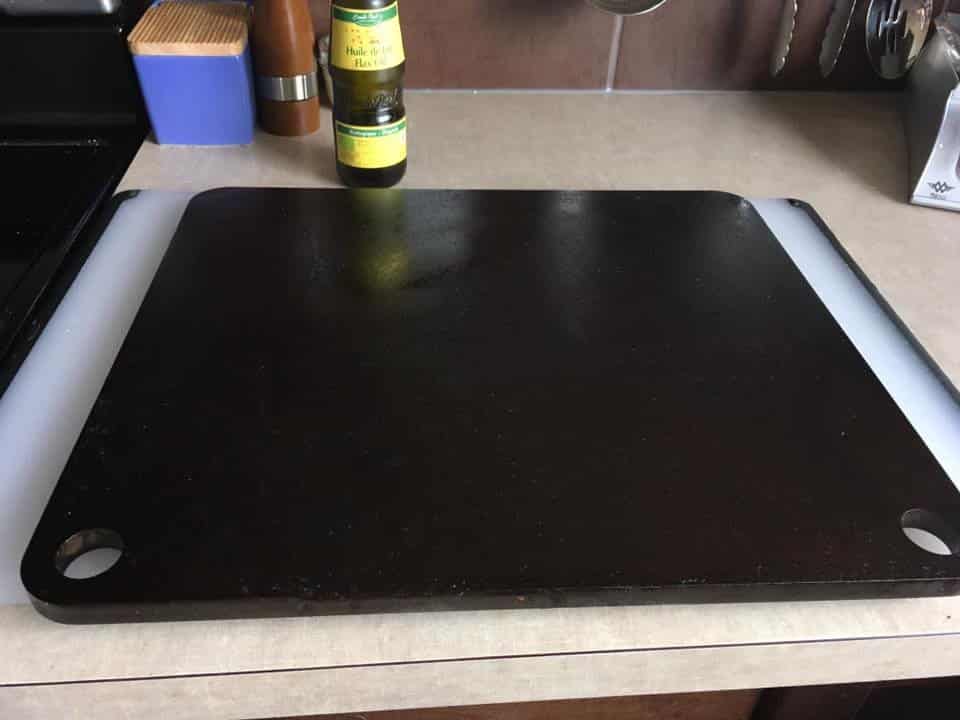
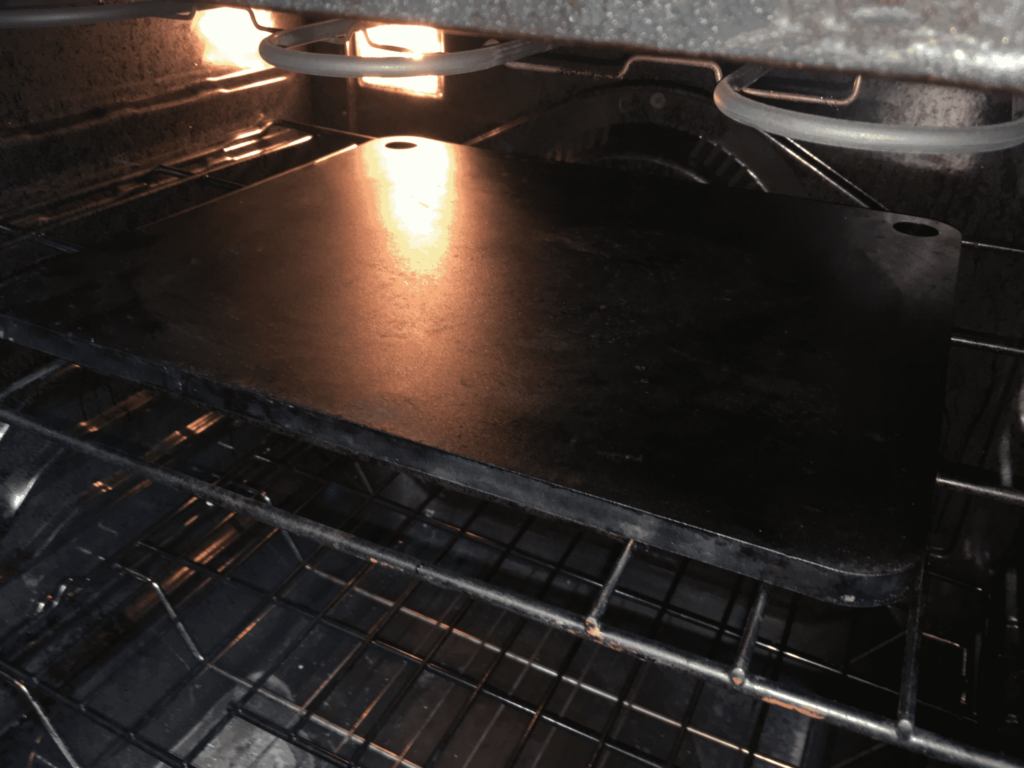
The Dough
According to the AVPN, a Neapolitan pizza dough contains just water, flour, yeast, and salt. For this experiment, I went with Modernist Cuisine’s Neapolitan pizza dough. It uses traditional 00 (double zero) flour, which is very fine, to create an elastic dough that helps develop a network of gluten to trap gases to create a blistering crust. It’s a bit untraditional as it adds extra gluten to trap even more gases, and also contains a small amount of honey, but I’ve used the dough before and I’ve been happy with the results.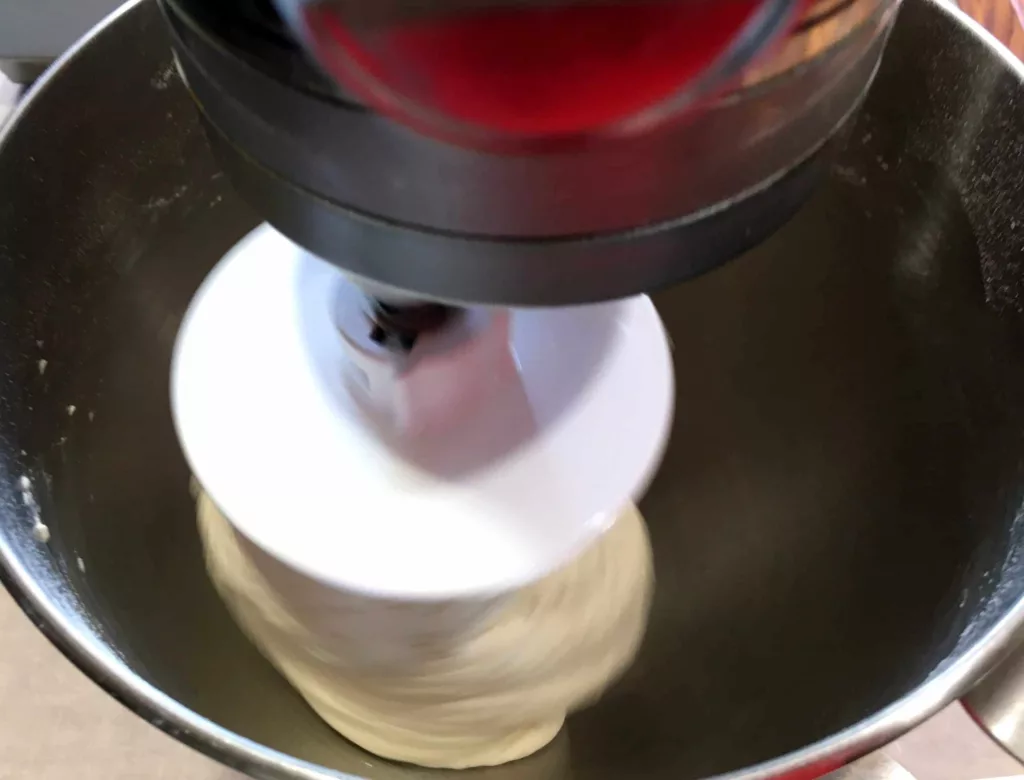
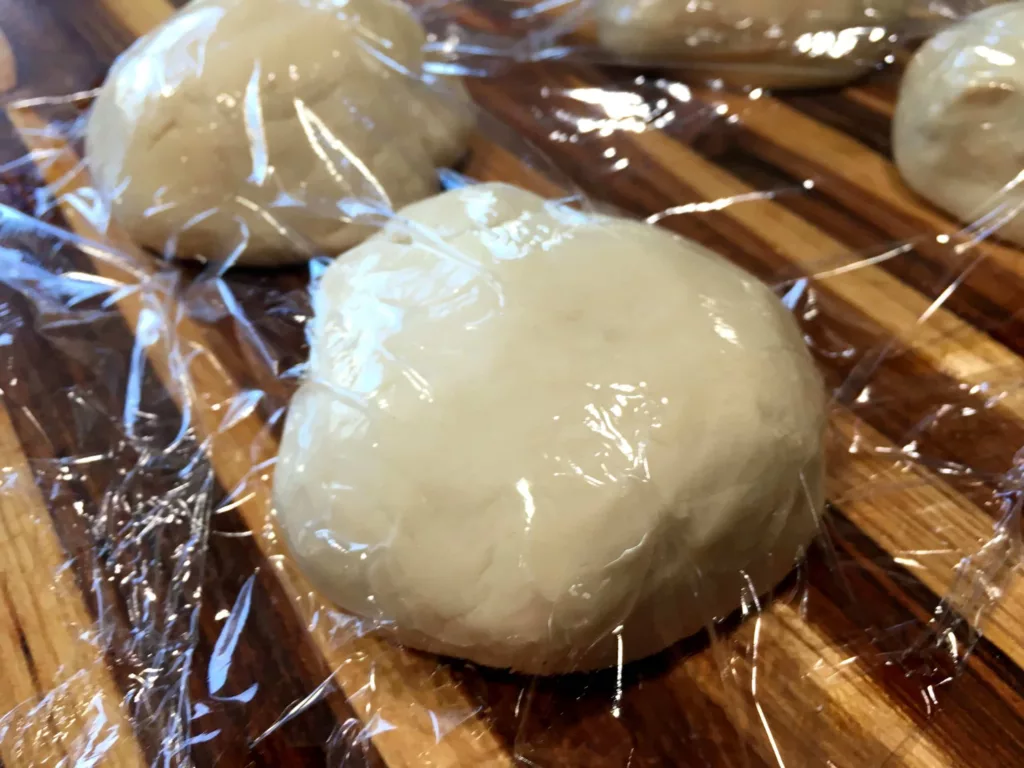
Pizza Margherita
For the purpose of this experiment, I made a simple, yet traditional Margherita pizza, whose toppings include San Marzano tomatoes, mozzarella cheese, fresh basil, and extra-virgin olive oil. The pizza is thought to be named in honor of the Queen of Italy, Margherita of Savoy, and the colors of the toppings match the colors of the Italian flag; red for the tomatoes, white for the mozzarella, and green for the basil.
I once again borrowed from Modernist Cuisine; this time for their pizza sauce, which involved sautéing a large amount of garlic in olive oil in the base of a pressure cooker. Rather than throw out that olive oil, I incorporated it in the sauce by adding one can of San Marzano tomatoes directly to it. I then closed the lid of the pressure cooker, brought it up to 1-bar of pressure, and maintained the pressure for 45 minutes. What resulted was a beautifully fragrant pizza sauce that was reminiscent of the best Italian pizzerias I’ve been to in Canada.
I stretched out the dough and evenly applied a layer of sauce onto its surface, leaving a small border around the edge to form a crust. I tore some basil leaves and applied them liberally to the pizza. Finally, I added slices of mozzarella cheese on top.
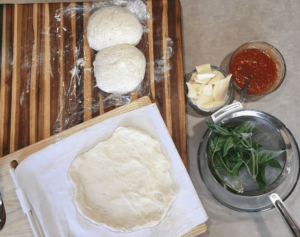
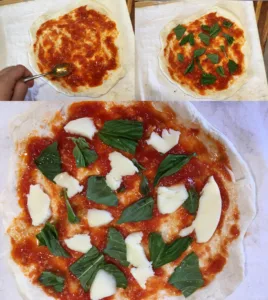
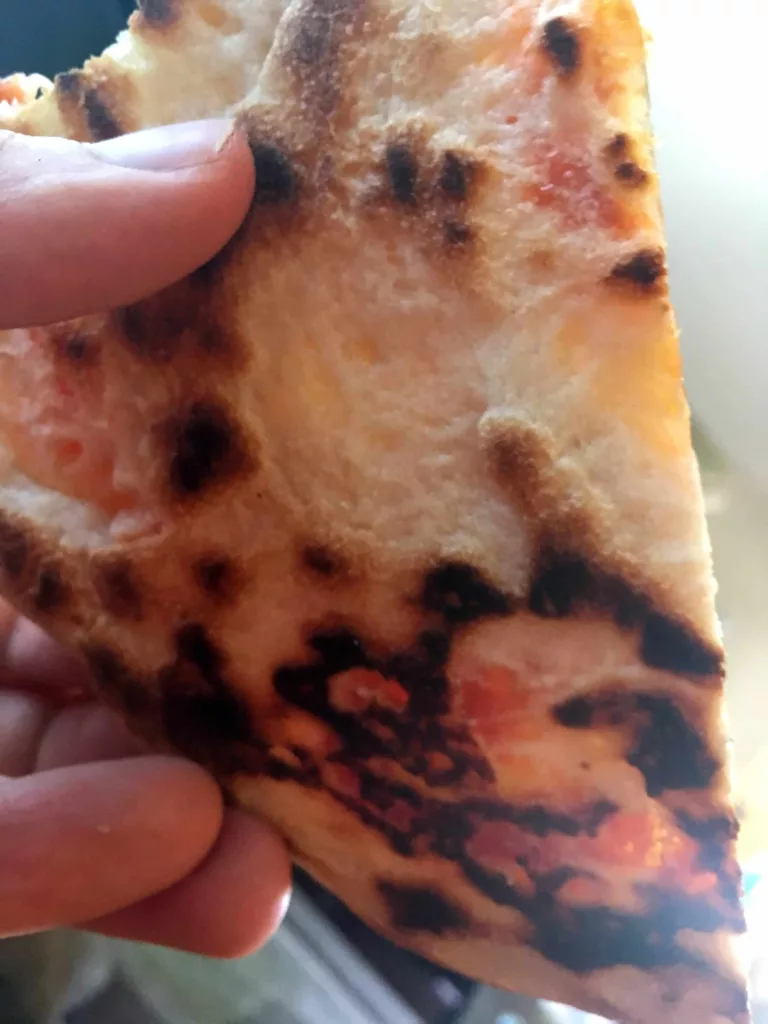
The Results: Neapolitan Pizza at Home
The first pizza that I launched came out with a perfectly cooked underside, but the toppings weren’t well cooked. This is because I used an electric oven with a broiler that cycles on and off. I easily fixed this by propping open the oven door slightly with a ladle. This works because the broiler cycles off when it senses the air temperature is too high. With the door propped open slightly, the air temperature never reaches the temperature that triggers the broiler to turn off. Don’t worry. The high thermal mass of your pizza stone, and the sheer heat from the broiler, will keep things hot enough to continue to turn out excellent Neapolitan-style pizzas.
After learning from my mistakes, I turned out two pizza pies with nicely cooked crust and toppings. The basil charred a little bit, so next time I will soak the basil in water before putting it on the pizza in order to prevent scorching.
The underside the of the pizza had several charred bubbles which is indicative of a Neapolitan pizza. The crust was thin, but it held onto the toppings well. And there was significant amounts of air pockets scattered throughout the crust, contributing to a Neapolitan texture.
I would have liked to have seen more leopard spotting on the top of the crust, but I think that’s more technique, and possibly dough composition, than the pizza steel’s fault. After all, the steel cooks the underside of the pizza, while it’s the broiler’s responsibility to cook the top. I’ve witnessed other cooks on the internet achieve leopard spotting with a pizza steel, so I just need to hone my technique.
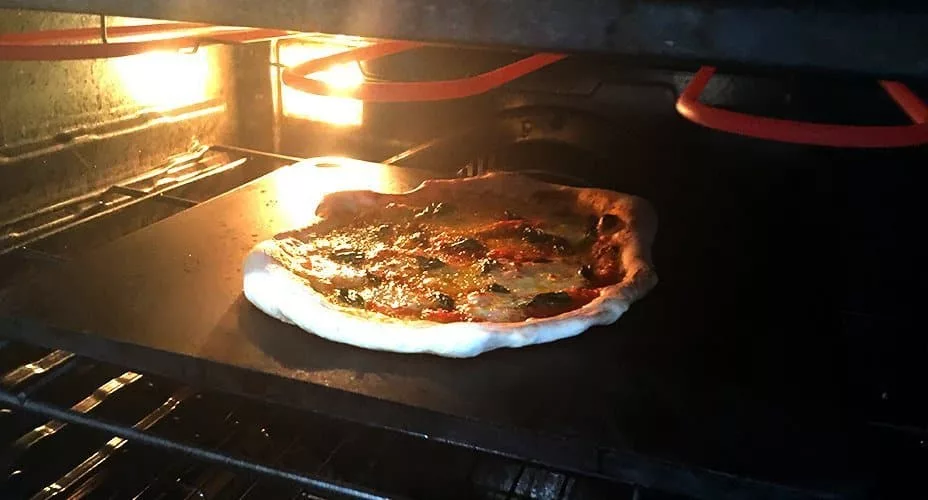
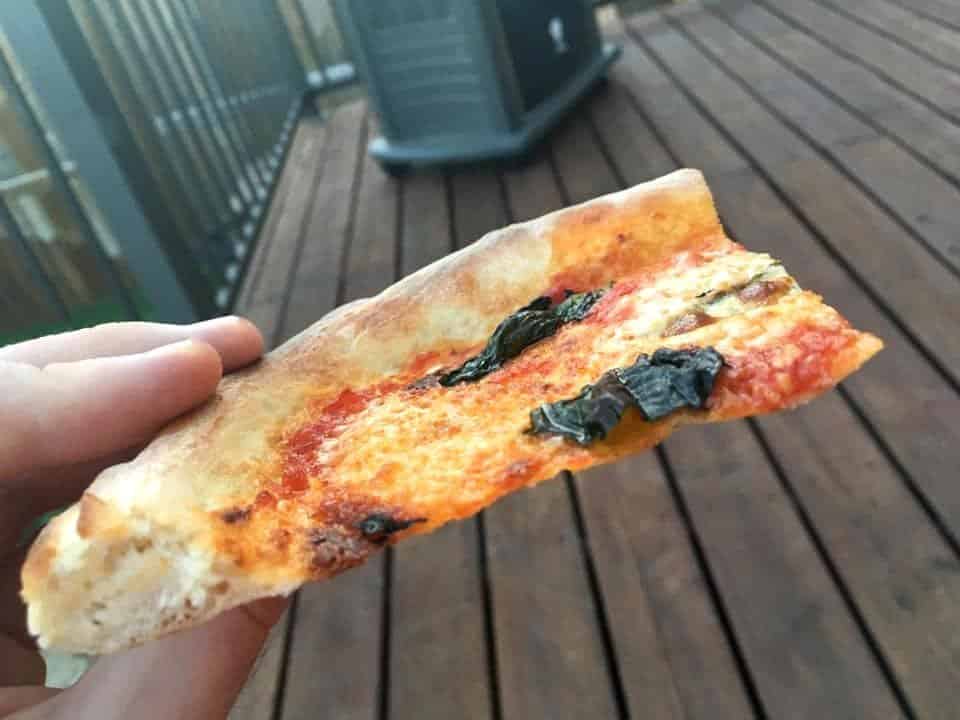

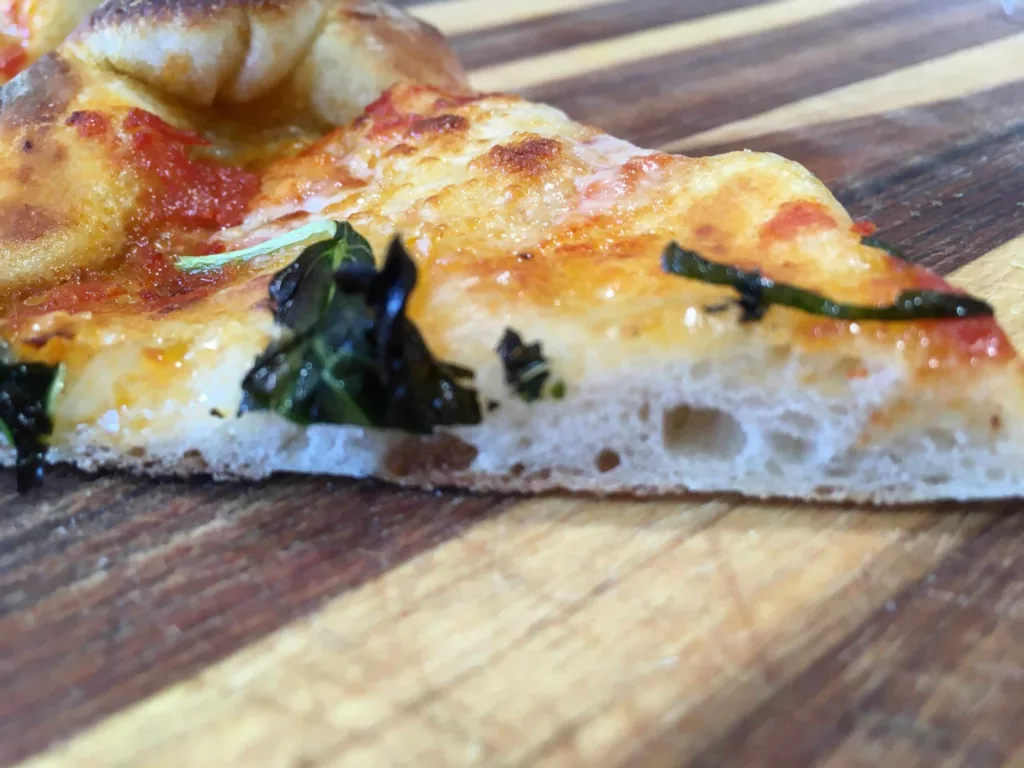
The high thermal mass of the pizza steel became very clear to me when I returned 4 hours later to remove the pizza steel from the oven. It was still very warm! I ended up leaving it in the oven over night.
I will have to wait until my trip to Naples to see how this at-home version truly compares to a true Neapolitan pizza. I will keep you posted!
Pizza Steel vs. Stone
When I first heard about a pizza steel, I wondered what the difference was between it and a pizza stone. Now it’s clear; the thermal conductivity of the pizza steel outperforms the pizza stone dramatically. There simply is no way to get Neapolitan-style pizza out of a stone in a traditional home oven.

Other Accessories
A pizza peel is a must if you are cooking on a stone or steel. I used and highly recommend the EXO Non-Stick Polymer Sealed Super Peel Pizza Peel. It comes with a cloth conveyor belt system that makes it an ease to launch your pizza dough into the oven and to retrieve it after it’s done cooking. It can also be used on breads.To Summarize the NerdChef Steel Stone
Traditional Neapolitan pizza requires a wood-fired brick oven that reaches temperatures of 800-900°F. This is well beyond the capabilities of a home oven.
A ½ inch thick pizza steel does an excellent job approximating the conditions of a Neapolitan wood-fired brick oven at home. The pizzas I cooked on it finished in under 3 minutes, and had a crisp and and scorched blistering crust that’s signature of Neapolitan pizza. The steel’s high performance is due to the thermal conductivity and thermal mass properties of steel. I highly recommend purchasing a ½ inch pizza steel if you are serious about making pizza at home. Either the ½ inch NerdChef Steel Stone – High-Performance Baking Surface for Pizza that I featured in this review or the ½ inch Baking Steel will do.
Breville recently released the Breville Pizzaiolo, a counter top pizza oven which promises to reach 750°F—nearly matching the thermal conditions of a traditional wood-fired brick oven. While the Pizzaiolo does look promising, I have yet to test it, or see it demoed, so I cannot recommend it at this time. If you’ve tried it, I would love to see your impressions of it in the comments below.




Might help regulate the oven temperature so that you don’t end up with a burned top and perfectly cooked crust? I don’t think it would mimic a Neapolitan though because the goal is to cook the crust as soon as possible. On a preheated pizza steel, that only takes 3 minutes, and if you have your broiler on, the toppings will be done just in time 🙂
I will have to give your idea a try sometime though. I think it might be good for North American style pizzas.
Thank you for the tip 🙂
I read once that putting a pizza stone on the shelf above if you don’t have a grill function helps as well.
Hey Curtis. I know some will crucify me for saying so, but I made Hawaiian pizza the other night. I love pineapple on pizza 🙂
I’ve owned a baking steel since they first launched. No other homemade pizza compares to one that’s made on one. Have you experimented with any other flavors than the Margarita?